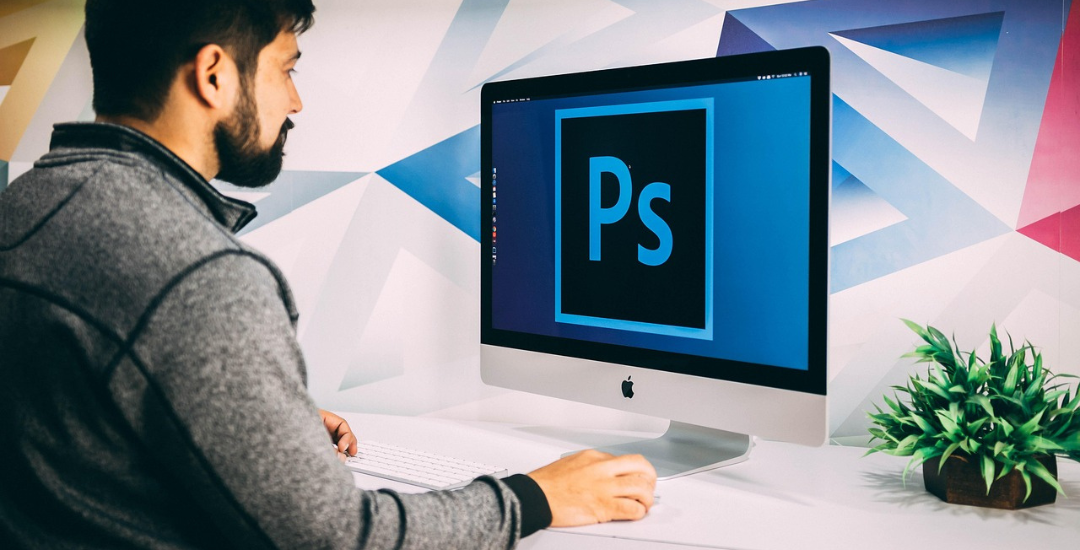When someone mentions photo editing or graphic design, the first name that often comes to mind is Adobe Photoshop. Over the past few decades, Photoshop has transformed from a simple image editing software into a creative powerhouse used by millions across the globe. Whether you’re a photographer, designer, marketer, or a curious beginner, Photoshop offers limitless possibilities to bring your ideas to life.
In this blog, we’ll explore what Photoshop is, its key features, how it’s used across industries, and why it remains the go-to tool for digital creativity.
What is Adobe Photoshop?
Adobe Photoshop is a raster graphics editor developed by Adobe Inc. First released in 1988, it has become the industry standard for image editing, digital painting, graphic design, and more. It allows users to manipulate images and graphics in nearly every conceivable way — from basic retouching to complex digital art.
Available on both Windows and macOS, Photoshop integrates seamlessly with other Adobe Creative Cloud apps like Illustrator, Lightroom, and After Effects, making it a central hub in many creative workflows.
Why Use Photoshop?
Here are just a few reasons why Photoshop continues to dominate the creative space:
🎨 Creative Freedom
From designing stunning visuals to editing photos pixel by pixel, Photoshop gives artists complete control over their work.
🛠️ Advanced Editing Tools
Photoshop offers a comprehensive suite of tools, including layer management, masking, brushes, filters, smart objects, and more.
📸 Photo Retouching
Remove blemishes, correct colors, swap backgrounds, or even change lighting – Photoshop makes it all possible with precision.
👨💻 Professional Design
Designers use Photoshop to create banners, brochures, website layouts, social media graphics, and everything in between.
🧠 AI-Powered Features
With Adobe Sensei (Adobe’s AI engine), Photoshop now includes features like automatic sky replacement, object selection, and content-aware fill – speeding up workflows and boosting productivity.
Key Features of Photoshop
Let’s break down some of the core features that make Photoshop a creative powerhouse:
1. Layers
Layers are the backbone of Photoshop, allowing users to work on individual elements separately without altering the entire image. This makes editing and organizing much easier.
2. Selection Tools
From the basic marquee and lasso tools to the advanced object selection and quick selection tools, Photoshop allows pinpoint accuracy in choosing parts of an image.
3. Filters & Effects
Photoshop comes loaded with artistic, blur, distort, and stylize filters that can transform photos in seconds. Smart Filters let you apply non-destructive effects.
4. Brushes and Painting Tools
Digital artists use custom brushes to paint, draw, and add textures. With pressure-sensitive support, you get the feel of traditional painting on a digital canvas.
5. Text & Typography
Photoshop provides robust tools to add and style text, making it ideal for designing posters, covers, advertisements, and UI elements.
6. Retouching and Repair
Tools like the Clone Stamp, Healing Brush, Patch Tool, and Spot Healing Brush make photo restoration and correction seamless.
7. 3D and Video Editing
Photoshop isn’t just for static images. It also supports basic 3D design and video timeline editing for multimedia projects.
Who Uses Photoshop?
Photoshop is used across a wide range of industries. Here are a few professionals who rely on it:
- Photographers: For retouching, color grading, and photo manipulation.
- Graphic Designers: To design logos, ads, packaging, and branding materials.
- Web Designers: For wireframes, UI/UX design, and web graphics.
- Social Media Managers: To create eye-catching content and ad creatives.
- Artists & Illustrators: For digital painting, concept art, and illustrations.
- Marketers: For visual content creation in campaigns and presentations.
- E-commerce Sellers: For product photo enhancement and banner creation.
Photoshop for Beginners: Where to Start?
If you’re just starting with Photoshop, it might seem overwhelming. But the good news is, Adobe provides an abundance of tutorials, templates, and community support. Here’s a simple roadmap:
- Learn the Interface – Understand where tools, menus, and panels are.
- Practice Layers – Experiment with adding, hiding, and modifying layers.
- Try Basic Edits – Crop, resize, adjust colors, and apply filters.
- Use Tutorials – Adobe and YouTube are full of step-by-step guides.
- Join Creative Communities – Engage with others on platforms like Behance or Reddit’s r/Photoshop.
Photoshop vs Other Design Tools
Photoshop is often compared with other tools like Canva, GIMP, or Affinity Photo. Here’s how it stands out:
| Feature | Photoshop | Canva | GIMP |
|---|---|---|---|
| Professional Editing | ✅ | ❌ | ✅ |
| AI-Powered Tools | ✅ (Adobe Sensei) | ❌ | ❌ |
| Layer Support | ✅ | Limited | ✅ |
| Ease of Use | Moderate | ✅ Easy | Moderate |
| Industry Standard | ✅ | ❌ | ❌ |
While Canva is great for quick social posts, Photoshop gives full control and is ideal for high-end design and editing tasks.
Tips to Boost Productivity in Photoshop
- Use Shortcuts: Learning keyboard shortcuts can save hours of work.
- Work with Smart Objects: These let you apply non-destructive edits.
- Customize Workspaces: Tailor the layout for your specific task.
- Use Presets and Actions: Speed up repetitive tasks with custom actions.
- Save in PSD Format: Preserve all layers for future editing.
Conclusion: Is Photoshop Worth It?
Absolutely! Adobe Photoshop remains the gold standard for image editing and digital design. With its ever-evolving features, powerful AI tools, and unmatched flexibility, it’s more than just software – it’s an essential part of the creative process.
Whether you’re creating your first poster or crafting high-end photo composites, Photoshop provides the tools you need to make your ideas a reality. If you haven’t tried it yet, now’s the time to explore your creative potential.


